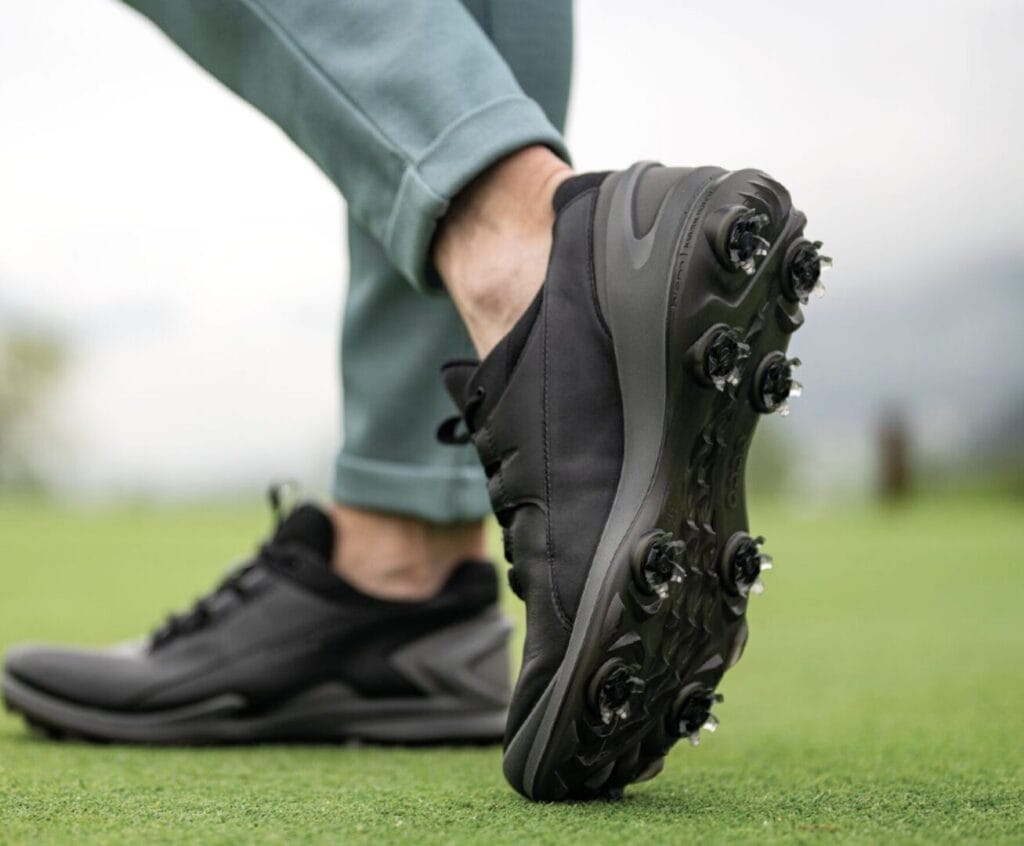The 2025 Met Gala is more than just a showcase of couture and creativity—it’s a landmark moment in the evolution of fashion, where AI-driven innovation is redefining personalization, craftsmanship, and global industry standards. The theme for the 2025 Met Gala is “Superfine: Tailoring Black Style”, a celebration of Black Dandyism and its influence on fashion over the centuries. Inspired by Monica L. Miller’s book Slaves to Fashion: Black Dandyism and the Styling of Black Diasporic Identity, the theme explores the artistry and cultural significance of tailored menswear. This marks the first time in over two decades that the Costume Institute’s exhibition will focus exclusively on menswear Expect bold, expressive designs that challenge traditional notions of style while paying homage to the rich history of Black fashion and self-expression.
This year, for the first time in history, AI has played a pivotal role in predicting celebrity looks, offering a glimpse into a future where artificial intelligence partners with designers to create the next generation of bespoke, luxury, and everyday wear.
One brand leading this charge is Hockerty, a visionary force merging traditional tailoring with AI-powered customization tools. AI is not just a convenience in fashion—it is a transformative technology that is reshaping how garments are designed, produced, and even conceptualized. From predictive style analytics to virtual fitting technology, AI is revolutionizing the very fabric of the industry.

The First-Ever AI Prediction of Met Gala Style
Artificial intelligence has analyzed historical data, cultural influences, and emerging trends to generate incredibly detailed forecasts for the Met Gala’s biggest celebrity moments. Among the predicted ensembles, Timothée Chalamet’s fusion of classic tailoring with avant-garde design and Zendaya’s homage to cultural heritage through modern interpretation stand out as examples of AI’s ability to anticipate fashion movements before they even happen.
But AI’s influence in fashion goes far beyond red carpet forecasting—it is actively driving a global transformation in both luxury and commercial fashion.
10 Ways AI Is Transforming the Fashion Industry Globally
AI is not just streamlining fashion—it is reinventing it in ways that were unimaginable even five years ago. Here are 10 game-changing ways artificial intelligence is revolutionizing the industry:
- Predictive Trend Analytics – AI analyzes billions of data points, from social media engagement to historical fashion trends, to forecast what will be in demand long before consumers even realize it.
- AI-Powered Customization – Platforms like Hockerty use AI algorithms to offer hyper-personalized tailoring—allowing customers to create garments suited to their unique preferences, body shape, and cultural influences.
- Virtual Fitting & Size Optimization – AI-powered tools now analyze body measurements with extreme precision, eliminating sizing inconsistencies and vastly reducing returns and waste in the fashion industry.
- Automated Textile Design – AI can generate intricate textile patterns, streamlining the design process while enabling brands to create custom prints faster than ever before.
- Hyper-Efficient Production – AI enhances supply chain management, optimizing fabric sourcing, production speed, and waste reduction to drive sustainability and reduce environmental impact.
- AI-Assisted Fabric Selection – Smart algorithms analyze temperature, flexibility, durability, and comfort metrics to help designers select the perfect material for each garment.
- Personalized Shopping Experiences – AI powers real-time styling recommendations, giving shoppers tailored suggestions based on personal tastes, climate, and social trends.
- AI-Enhanced Fashion Marketing – Fashion brands now use AI to craft data-driven campaigns, ensuring precision-targeted advertising that resonates with individual consumer behaviors.
- AI-Led Fashion Sustainability Solutions – AI helps brands transition to eco-friendly materials, providing sustainable textile alternatives that are biodegradable or ethically sourced.
- AI Collaboration with Designers – Rather than replacing human creativity, AI is becoming a collaborative tool for designers, generating 3D sketches, concept ideas, and virtual prototypes that revolutionize the design process.
The Future of AI-Driven Fashion
This technological revolution is not about replacing tradition—it is about enhancing it. AI is helping brands like Hockerty blend modern efficiency with timeless craftsmanship, ensuring that every garment retains its artistic depth and individuality while benefiting from the precision and innovation that artificial intelligence provides.
Looking ahead, the question is no longer whether AI will impact fashion—but how deeply it will shape its future. The Met Gala’s AI-driven predictions, Hockerty’s revolutionary approach to tailoring, and the rapid integration of AI across global fashion markets all signal a new era—one where personalization, craftsmanship, and technological intelligence merge seamlessly to define the next chapter of style.
AI is not just a supporting player—it is becoming a leading force in the way we imagine, create, and wear fashion.
This is only the beginning—do you want to explore AI-driven innovations in fashion even further? Let me know, and I’ll be happy to dive into even more technical details, industry insights, and predictions!
StyleLujo.com’s Editor Joseph DeAcetis sat down for an exclusive interview with Hockerty’s spokesperson, Alberto Gil, to explore the future of fashion at the intersection of bespoke tailoring and AI-driven innovation. As we gear up for the 2025 Met Gala, a celebration of cultural heritage and sartorial elegance, this conversation unveils exciting insights into how Hockerty is redefining personalization in menswear and beyond.

At Hockerty, we have always believed that true elegance comes from authenticity and innovation. I am proud to lead a brand that respects the heritage of bespoke tailoring while embracing the technological advancements that shape the future of fashion. Our mission, “Dress the Real You,” is about empowering individuals to express their uniqueness with garments that combine craftsmanship, personalization, and innovation. It is a true honor to share our vision with StyleLujo.com, especially in the context of the 2025 Met Gala—an event that perfectly embodies the intersection of culture, artistry, and forward-thinking creativity” Says ALBERTO GIL _SPOKEN PERSON
Joseph DeAcetis: How is Hockerty’s AI redefining innovation in fashion, and what role do you believe technology plays in celebrating individuality through tailoring?
At Hockerty, we believe AI is not just a tool but a bridge between tradition and innovation. Our AI enhances the bespoke experience by helping customers visualise truly personalised designs in real time. Technology allows us to celebrate individuality at a new level, offering unlimited options that honour each person’s unique style without losing the craftsmanship and precision of tailoring.
Joseph DeAcetis: With AI predicting the iconic looks of the Met Gala, what insights do you think it offers about the future of fashion and the evolution of bespoke tailoring?
I believe the predictive power of AI reveals a future where bespoke craftsmanship and creativity coexist harmoniously. It suggests that personalization will become increasingly important and that tailoring will evolve to be even more responsive, combining traditional techniques with data-driven insights to anticipate and meet individual needs in ways that were hard to imagine until recently.


Joseph DeAcetis: How does Hockerty balance the art of tailoring with the precision and scalability of AI technology?
Craftsmanship and technology remain at the heart of Hockerty. AI brings us precision, but the human touch perfects every garment. We use AI to create lookbooks, optimise processes like measurements capture and fabric visualisation, but every suit is finished with the dedication and detail that only artisans can provide. It’s a blend of both: technology enhances efficiency, but craftsmanship always preserves authenticity.
Joseph DeAcetis: The 2025 Met Gala theme celebrates cultural heritage and sartorial elegance. How do you believe AI can amplify storytelling through fashion?
AI can be a powerful storyteller by blending data, history, and personalisation into each garment. It allows us to explore cultural heritage more deeply, incorporating patterns, cuts, and symbols from various traditions and presenting them meaningfully to today’s global citizens. I believe it’s about honouring the past while innovating towards the future.

Joseph DeAcetis: Among the celebrity looks predicted for the Met Gala, which one resonates with you the most and why?
I was particularly impressed by the prediction for Timothée Chalamet. Coleman’s surprising look also stood out. The design fused classic tailoring with subtle nods to various cultures, seamlessly blending avant-garde and classic styles—a philosophy we deeply appreciate at Hockerty. True style respects history and embraces individuality.
Joseph DeAcetis: Can AI ever truly capture the emotional depth and cultural meaning that designers bring to their creations?
AI can suggest, imagine, and even inspire, but I believe it cannot replicate the emotional intelligence or lived experiences of designers or the customers who have been using our platform for years. It can enhance storytelling and offer new perspectives, but the heart of fashion—the human creativity—will always come from the people behind the designs, our clients.

Joseph DeAcetis: How does Hockerty’s mission, “Dress as you are,” align with the Met Gala’s theme of personalisation and reinterpretation?
“Dress as you are” is all about authenticity through style. Just like the Met Gala celebrates personal and cultural expression, we encourage our customers to create garments that reflect their true selves. We provide the tools—and the freedom—to reinterpret their style through their personal lens.
Joseph DeAcetis: What do you see as the greatest challenge and opportunity in integrating AI into the bespoke fashion creative process?
The greatest challenge is maintaining the soul of bespoke fashion—its human essence—while leveraging AI’s efficiency. But that is also the greatest opportunity: using technology to democratize high-quality tailoring, making it more accessible and even more personalized without losing the craftsmanship that makes it special. We have been working for more than 15 years to preserve both.

Joseph DeAcetis: How do you envision AI influencing future Met Gala themes and redefining red carpet culture?
I imagine AI becoming a tool that helps create content, collaborating with brands. Met Gala themes inspire the fashion world, and AI can help summarize global influences or even predict emerging aesthetic movements. Red carpet culture could become bolder and more inclusive, celebrating the fusion of tradition, innovation, and—above all—individual styles, something we strongly believe in.
Joseph DeAcetis: If AI-generated predictions shape public perception of fashion events, do you think they could also evolve into collaborative tools for designers?
Absolutely. Rather than replacing designers, AI can become a creative partner, offering inspiration, testing ideas, and expanding possibilities. It’s a dialogue: designers bring emotion and vision; AI provides analysis and speed. Together, they can create experiences that are deeply personal and universally resonant
Absolutely! AI is revolutionizing fashion at every level—from design and production to marketing and consumer experience. Let’s dive even deeper into how cutting-edge innovations are reshaping the industry globally.
AI-Powered Fashion: The Next Frontier
Artificial Intelligence isn’t just streamlining operations—it’s radically transforming the way fashion is conceived, created, and consumed. With advancements in machine learning, deep learning, and computer vision, AI is accelerating creativity, sustainability, and personalization like never before.
1. AI-Powered Design Generation
AI-driven design tools allow brands to create unique patterns, silhouettes, and digital prototypes in seconds. Platforms like Deep Dream Generator and Runway ML use machine learning to analyze past fashion trends and generate new, avant-garde designs that push creative boundaries.
How it Works:
- AI studies historical fashion archives and trend analytics to suggest new fashion-forward aesthetics.
- Designers can use AI to generate unlimited variations of a design before finalizing a concept.
- AI-generated virtual mood boards help fashion houses test concepts before production.
2. Hyper-Personalized Shopping Experiences
Fashion brands are using AI-driven recommendation engines to curate shopping experiences tailored to individual customers. Major retailers like Zalando, ASOS, and Farfetch utilize AI to personalize product suggestions based on browsing behavior, body type, and previous purchases.
The Impact:
- AI predicts consumer preferences, showing products before customers even realize they want them.
- Smart virtual stylists recommend outfits in real time, creating a more intuitive and customized shopping experience.
- AI-driven size prediction tools reduce returns by matching customers to their perfect fit based on past purchases and body measurements.
3. Digital Avatars & AI-Powered Virtual Try-Ons
AI-powered 3D body scanning and virtual try-ons are revolutionizing how consumers engage with fashion. Brands like Nike and Gucci use digital avatars to allow shoppers to preview clothing items on AI-generated versions of themselves.
How AI-Powered Try-Ons Work:
- AI maps body shape and dimensions, creating a digital twin for accurate fittings.
- Customers can see how clothes will look on them before purchasing, reducing returns and waste.
- AI adapts designs in real-time, ensuring consumers receive garments that perfectly fit their proportions.
4. AI-Driven Sustainable Fashion Initiatives
One of AI’s biggest contributions to fashion is its ability to drive sustainability. With AI-powered fabric recycling, waste reduction, and ethical sourcing, brands are cutting their carbon footprints significantly.
Key AI-Led Sustainability Advances:
- AI analyzes production processes, reducing fabric waste by optimizing cutting and pattern layouts.
- Machine learning models predict consumer demand, preventing overproduction and excess inventory waste.
- AI helps identify eco-friendly materials, ensuring textiles are ethically sourced and biodegradable.
5. Smart Supply Chain Optimization
AI is enhancing inventory management and logistics, making global supply chains more efficient, predictive, and cost-effective. Fast-fashion brands like H&M and Zara use AI to anticipate demand fluctuations and minimize overproduction.
Why It Matters:
- AI predicts optimal manufacturing schedules, reducing warehouse overflow.
- Smart logistics tools track shipping patterns and optimize distribution routes.
- AI-powered automated production lines improve speed while maintaining high-quality standards.
6. AI-Powered Digital Clothing & NFTs in Fashion
The rise of digital fashion and AI-generated virtual clothing collections is transforming how we perceive, own, and interact with fashion. Luxury houses like Dolce & Gabbana and Burberry have launched blockchain-powered NFT fashion pieces, allowing customers to own digital-only couture garments.
Future Implications:
- AI-powered virtual garments will allow people to wear exclusive designs in the Metaverse.
- Fashion NFTs will become a form of investment, just like physical couture.
- AI-generated clothing will bridge the gap between gaming, digital fashion, and real-world apparel.
7. AI-Generated Marketing & Intelligent Ad Campaigns
Fashion brands now use AI to generate marketing copy, analyze consumer behavior, and predict sales trends with incredible accuracy. AI-driven social media analytics ensure brands target the right audience with the most effective messaging.
Game-Changing Benefits:
- AI-powered predictive analytics anticipate viral fashion trends before they happen.
- AI-generated campaigns customize content for different demographics in real time.
- AI monitors social media engagement, helping brands refine marketing strategies instantly.
8. AI-Assisted Custom Fabric & Textile Innovation
AI is now designing textiles, bringing new materials to life through data-driven engineering. Companies like Modern Meadow and Bolt Threads use AI-generated biofabrication to create sustainable materials like lab-grown leather and synthetic silk.
AI’s Role in Textile Science:
- AI algorithms engineer stronger, more durable fabrics for fashion production.
- Smart textiles adapt to body temperature, movement, and environmental conditions.
- AI helps perfect synthetic materials to mimic natural fibers without ethical concerns.
9. AI-Powered Virtual Fashion Shows & Digital Runways
AI-driven fashion shows are transforming runway events, blending physical and digital spaces to create immersive fashion experiences. The Metaverse and Augmented Reality now allow audiences to experience collections through AI-generated environments.
Exciting Innovations:
- AI constructs fully digital fashion show venues with customizable aesthetics.
- Designers can showcase garments in interactive, 360-degree virtual spaces.
- AI allows for live design adaptation, letting models wear changing outfits in real time.
10. AI-Enhanced Fashion Forecasting & Retail Strategy
AI-powered forecasting is shaping long-term industry movements, ensuring brands make data-informed decisionsabout product lines, pricing, and retail strategies.
Key AI Capabilities:
- AI predicts seasonal trends, celebrity influence, and global demand shifts.
- AI adapts pricing models based on real-time demand analytics.
- AI scans runway footage and retail sales reports to identify emerging industry disruptors.
AI’s Role in Fashion’s Future: Innovation Without Limits
From digital tailoring to sustainable innovation, AI is setting the stage for a fashion industry that’s smarter, more ethical, and profoundly creative. Whether redefining red carpet culture, transforming luxury fashion, or revolutionizing consumer experiences, AI is the driving force behind the next era of style.
Save Article








